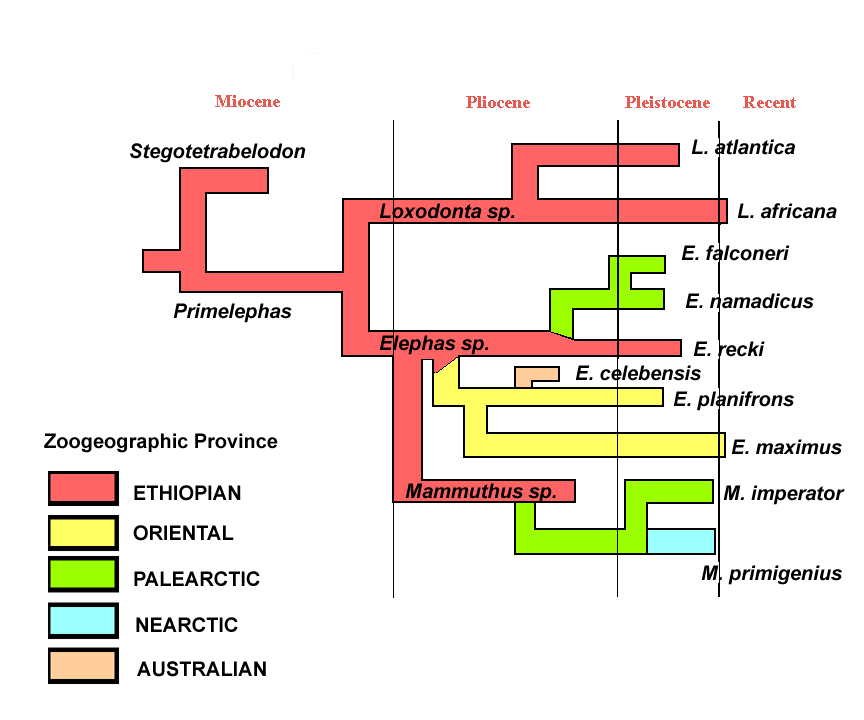Classification
Not too long ago there were only considered to be two living species of elephants in existance: Loxodonta africana 'African Bush Elephant' and Elephas maximus 'Asian Elephant'. More recently though scientis have taken a closer look at the African elephants and realized that there were really who species under the one name. Because of this the origianal pigmy bush elephant is now a seperate species, Loxodonta cyclotis 'African Forest Elephant' (Murata et al, 2009).
Domain: Eukarya- First seperating from the prokaryots almost two million years ago, these are organisms with cells containing nucli (Classification, 2011).
Kingdom: Animalia- Multiclelular
heterotrophs which ingest their food before digesting (Animalia,
2001).
Phylum: Chordata- Have a
notochord, a spinal column, that during some part of their life
which supports their body during movement (Chordate, 2001).
Class: Mammalia- Includes about
5000 species in 26 orders, found on all continents and in all
oceans. All mammals share three common
characteristics: three middle ear bones, hair, and mammary glands
which produce milk (Mammalia, 2005).
Order: Proboscidea- Throughout
history, species in this order have been known to increase in size.
The earliest species weighed about 120 kg, and modern species can
weigh more than 6,000 kg (a male African elephant). Earliest
proboscideans lacked trunks and tusks; these structures developed in
a few different forms over the years (Proboscidea, 2000).
Family: Elephantidae- Three main
species survive to date under the family Elephantidea, Loxodonta
cyclotis (African forest elephant), Loxodonta africana
(African bush elephant), and Elephas maximus, (Asiatic
elephant) (Elephantidae, 2013). The main chracteristic that caused
the split in this phylogenetic section is a major adaptive change in
the chewing method elephants use. The mandible, specifically the
elephants' molars evolved in length, width, and function, requiring
a new lineage to form (Maglio, 1973).
Genus: Loxodonta- Two
species remain under the genus Loxodonta, Loxodonta
cyclotis and Loxodonta africana (Loxodonta,
2013).
Species: Loxodonta Cyclotis-
Based on a study done by Science, the world's leading
journal of original scientific research, where 195 elephants in 21
different populations were studied, there is a 58% difference in the
genes between Loxodonta cyclotis and Loxodonta
africana, the African forest elephant being more genetically
diverse (Roca, 2001).

The tree above shows the phylogenetic tree of the Elephant family.
Loxodonta cyclotis would fit on the top branch, broken off
from the
L. africana.
The tree above shows the phylogenetic tree that makes
up every living organism. Loxodonta cyclotis fits on the
top orange Eucaria branch.